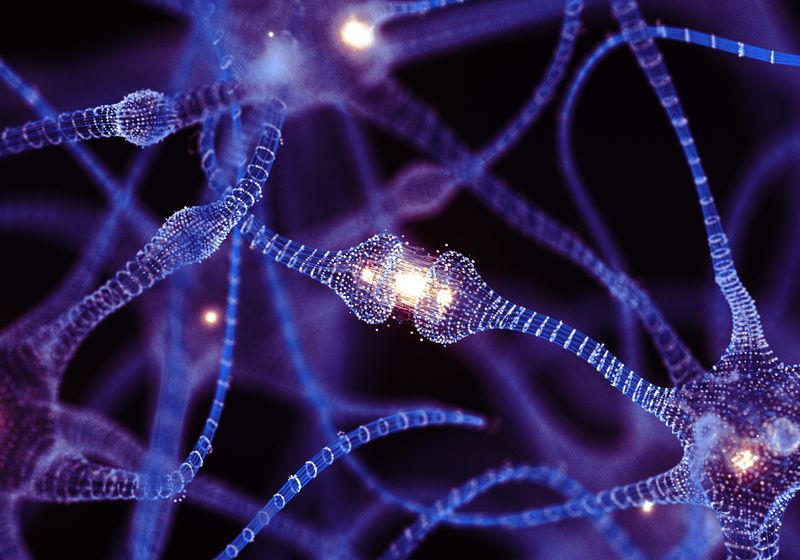Characterizing how neuronal genomics change over time in healthy brains may help researchers better understand how aging affects cognitive function.
Biological aging undeniably affects human cognitive function.1 However, how this happens—the underlying factors, interactions, and processes—remains unclear.
Michael Lodato, a geneticist from the University of Massachusetts (UMass), thinks somatic mutations—mutations that occur over an individual’s lifetime—play a key role in this phenomenon. In a study recently published in Nature, he and his research team conducted a detailed investigation of the genetic and genomic dynamics of the human brain across the lifespan, from infancy to centenarian.2 They found that while neurons accumulated somatic mutations with age, they did so in short housekeeping genes governing basic cell upkeep, rather than longer genes driving neuron-specific functions.
Michael Lodato, a geneticist from the University of Massachusetts, studies how neuron gene expression patterns change as humans age.
Much of the research on brain aging has centered on classical age-related diseases such as Alzheimer’s disease, Parkinson’s disease, and cancer. Yet executive brain function declines over time in the absence of these pathologies, something paradoxically termed “healthy aging.”1 Researchers believe that this decline may be the consequence of accumulated somatic mutations stemming from DNA damage and repair events.3,4 “Since neurons do not replicate, these mutations can have significant long-term consequences,” Lodato explained.
He and his team want to understand how neurons age in the absence of disease in hopes of slowing it down: “We are seeing very specific types of mutations in neurons—discrete mutation signatures—which tell us that specific pathways are important for protecting the genome. If we can control these pathways, we may be able to slow the rate of mutational accumulation and protect the genome.” Since neurons are post-mitotic and do not divide, single-cell resolution is necessary to detect neuronal mutations. Thus, Lodato turned to single-cell whole genome (scWGS) and single-nucleotide RNA sequencing (snRNA-seq).
Lodato, co-lead author Ailsa Jeffries, and the rest of their team used these technologies to examine brain cells from 19 neurotypical donors ranging in age from younger than one year old to 104. They then turned to fellow UMass colleague Zhiping Weng to help them analyze the data. Weng, a computational biologist, and her postdoctoral researcher and study coauthor Tianxiong Yu focused on isolating aging-related effects from natural variability. “We basically tried every which way to defeat our hypotheses,” Weng recalled. Lodato also pointed out that they compared their data to three other large datasets collected by other researchers to establish the extent of natural variability. Their efforts seem to have paid off.
“This is a really comprehensive and robust study that does a great job in pairing [genomic and transcriptomic] analyses,” said Lauren Donovan, a neuroscientist at Stanford University who was not associated with the study.

Zhiping Weng, a computational biologist from the University of Massachusetts, develops computational and machine-learning methods for analyzing large-scale omics datasets.
Lodato and Weng’s analysis revealed 2,803 genes that were differentially expressed with age, with more genes being downregulated than upregulated. Strikingly, the researchers discovered that housekeeping genes, typically linked with cell survival, metabolism, and ribosomal translation, were downregulated in neurons with age, while expression levels for neuron-specific genes did not change.
Lodato and his colleagues also noticed no age-related changes in the ratio of excitatory to inhibitory neurons or neurons to glia. They further found no loss of neuronal subtypes or expansion of reactive microglia that would potentially indicate immune activation. “When I got into this field, my perception was that there were fewer neurons in the aging brain—that you lose neurons over time, but that does not seem to be the case,” Lodato remarked. “The neurons are still there, and they are still doing what they are supposed to be doing. But their metabolism, their homeostasis, that seems to be dysregulated. They are becoming less active.”
Their scWGS analysis further revealed that somatic mutations accumulate at a rate of 15.1 per neuron per year. While these mutations occur randomly, patterns do exist regarding their frequency and characteristics, to the point where scientists can distinguish specific mutational signatures. For example, scientists have found these signatures in cancer cells corresponding to exposure to certain carcinogens. Lodato therefore hoped that he could identify signatures, and that these could provide insights on the general processes occurring in the aging brain.
His team found two distinct signatures that accounted for aging-related somatic mutation accumulation in neurons. Lodato described the first as a “molecular clock of aging” since it grows more visible over time. This signature, dubbed A1, accounted for 12.1 of the aforementioned 15.1 mutations per year. The other signature, termed A2, was related to mutations in DNA repair genes. Lodato thinks that A2 might be brain- or neuron-specific, in contrast to A1, which is very similar to a signature also found in many cancer types.
Curiously, the researchers noted that as neurons aged, they downregulated shorter genes but maintained or increased expression of longer genes. This could be because shorter genes such as housekeeping genes usually need to be accessed more often, and this necessary increased transcription frequency leads to more opportunities for somatic mutations to occur. Jeffries also noted that longer genes are linked with unique mechanisms that may exert protective effects. “Topoisomerases aid in the expression of long genes by unwinding them [for transcription], and more neurons happen to express more topoisomerases than non-neuron cells,” she explained. “This activity could potentially be protective.”
Donovan noted that the patterns observed here would likely not apply to every gene, so she suggested that future studies could offer a platform for delving deeper. “We could use these features [such as transcription level and length] to create a short list of genes that would be more susceptible [to somatic mutations],” she said.
Lodato too hopes that their work is just the beginning. This is music to Weng’s ears, whose lab is leading the Data Analysis and Coordination Center component of the National Institutes of Health-funded Multi-omics for Disease and Health Consortium (MOHD). “If we look in one cell and clearly identify changes to the genome and transcriptome, maybe the epigenome or proteome [too], then we can tightly tie a mutation to a functional consequence,” Lodato said. Weng added, “We are sharpening our analysis weapons, ready for new data for this project.”

